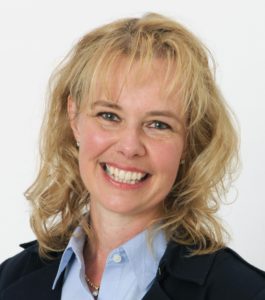

Doug Bateson, managing director of Golden Seeds and member of the board of directors of Cadenza Innovation
April 30, 2018 Golden Seeds is focused on investing in the vibrant opportunities of women-led companies. As such, we work with many talented, passionate female entrepreneurs who are doing truly remarkable things. Our “How Did She Do It?” series shares the stories, challenges and successes of the women behind the companies of Golden Seeds.
Golden Seeds is focused on investing in the vibrant opportunities of women-led companies. As such, we work with many talented, passionate female entrepreneurs who are doing truly remarkable things. Our “How Did She Do It?” series shares the stories, challenges and successes of the women behind the companies of Golden Seeds.
Today, Doug Bateson, managing director of Golden Seeds, interviews Christina Lampe-Onnerud, founder and CEO of Cadenza Innovation, and one of the pre-eminent battery experts in the world.
Below, they discuss how Christina founded Cadenza Innovation, a company poised to become a world leader in battery architecture, performance and safety, with a mission to solve big problems through innovation.
CLO: Founded in 2012, Cadenza Innovation was my second startup in the Lithium ion battery space. Previously, I founded Boston-Power, the only battery startup in the world to sell its batteries to HP for use in its laptops. For market opportunities, the company moved its headquarters from Boston to Beijing after a substantial funding round led by a top China-based venture firm, but I wanted to stay in the United States. I assembled a world-class team to create Cadenza Innovation, and we’ve since built a ground-breaking battery pack architecture and a network of global Tier 1 partners. The company is backed by more than $10 million in Series A funding led by Golden Seeds, along with funding from the U.S. Department of Energy and the states of New York, Connecticut and Massachusetts.
CLO: We saw an opportunity to build a super powerful battery technology platform with lower cost as the leading target. Energy-dense storage is critical for applications like electric vehicles (EVs), plug-in hybrid electric vehicles (PHEVs) and energy grid markets. The Cadenza solution is a unique battery technology platform that delivers industry bests not only for cost, but also in terms of performance and safety.
CLO: Any time you want to solve a big problem, it’s hard. In the early days, we frequently encountered people who said, “Really? You can make a battery this cheap and this safe with these performance metrics?” Now that we have so much data to answer that question, we don’t hear it as much. Instead, it’s, “Can you do it in mass production?” To which we say, “Yes, we can, by having existing players shift production and ramp up on this new architecture.” It will open a new manufacturing paradigm for players that make other mass-produced devices, too. With a market forecast of several hundred billion dollars over the next five to 10 years, there’s enormous opportunity.
CLO: We are under an NDA as we work with some of the biggest battery companies in the world. Among the milestones I can talk about are projects with the New York State Energy Research and Development Authority, which will be public at the New York Power Authority site in White Plains. We are teaming with a key partner to demo the impact of electricity leveling and peak shifting. This demonstration will begin soon and will run for almost 18 months.
CL: It’s hard to give advice that fits every startup, but I can share what’s brought success to the companies I’ve led. It’s all about the team. If you are an early-stage founder, it’s important to assemble a team that can help you bring potential forward. To help foster that, founders need to create a culture where transparency is celebrated and mistakes are communicated and addressed early; those become indicators of future success.
Give teams the chance to think outside of the box, and encourage employees to document “crazy” ideas. There’s no data for innovators — what they’re doing is new by definition — so give them the room required to change a paradigm. When the team has that freedom, and includes people who are both empathetic and relentlessly driven to accomplish the company’s mission, that’s what leads to success.
CLO: We had a great experience with you and your colleague Peggy Wallace as co-leads on the investment. Every founder wants sharp, intelligent and experienced investors who are intrigued by the market opportunity, and that’s what we had with Golden Seeds. You’ve remained great champions for us.
Golden Seeds devotes so much time and effort to support promising entrepreneurs who happen to be female. That is rare in tech, and it’s great to be a part of this cool club Golden Seeds has been able to assemble, especially since it is not a level playing field for women and men entrepreneurs. The women I know who are CEOs of companies, big and small, are quite accomplished and driven. Women CEOs are an underfunded group of business leaders, and they represent a good opportunity. Golden Seeds is smart to light that up and go after it.
For more wisdom like this from other amazing female leaders, follow Golden Seeds on Twitter.